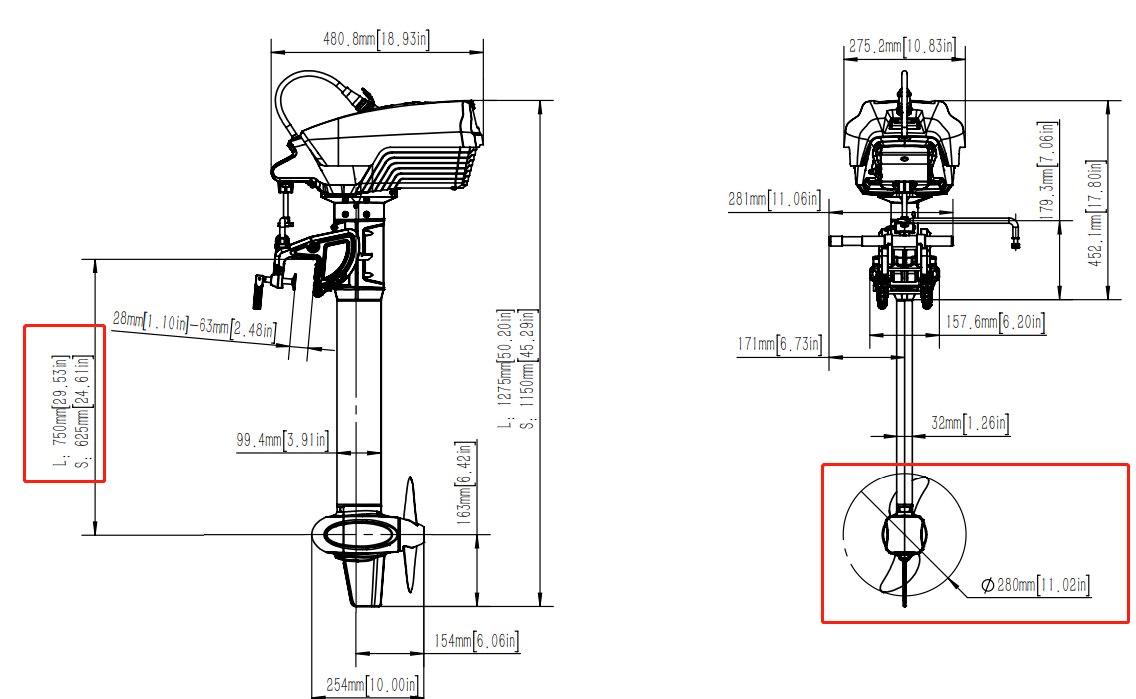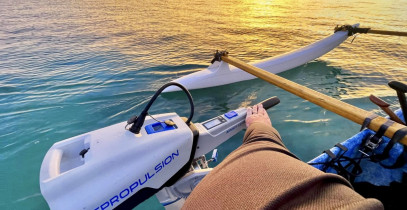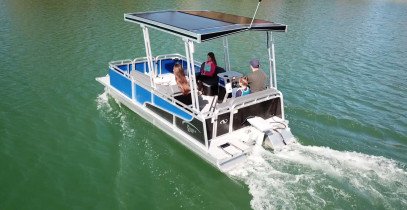
How to Measure Shaft Length on Outboard
How to measure outboard shaft length? Measuring the outboard shaft length is important as it will greatly impact the outboard performance as well as your boating experience:
If you go too long, it will still work but it may lack performance. You will also risk hitting bottom or submerged objects more frequently, such as rocks. If you go too short, that's the worst scenario as you're more than likely going to cavitate.
So how to measure shaft length on outboard?
In this guide, we will introduce an easy way to help you find the most appropriate shaft length for your boat with step-by-step instructions. As a crucial step to getting your shaft length right, we will also introduce how to measure transom height with a simple diagram and detailed instructions.
Note: Electric outboard motors, including ePropulsion, has a different shaft length measurement from gas-powered outboards. For electric outboards, the shaft length is measured from the top of the clamp bracket to the center of the propeller. For gas outboards, it's measured from the top of the clamp bracket to the anti-ventilation plate.

As you can see, our XS is close to S from Mercury. Our S is close to L from Mercury. Our L is longer than L from Mercury. See below.

How to Measure Outboard Shaft Length: the Principle
To find the suitable shaft length, the principle is to make sure the top of the propeller is matched to the lowest point of the transom with at least an extra 10 cm (4’’) space to ensure good water flow underneath the boat.
As you can see, the transom height is crucial to measuring outboard shaft length. Check the steps below to measure your transom height correctly.
How to Measure Transom Height
To get an accurate measurement of the transom height, you need to measure the length from the top of the boat transom to the bottom of the boat, as illustrated in the image below:

How to Measure Shaft Length on Outboard: Steps Guide
In order to measure outboard shaft length correctly, follow three easy steps blow:
Step 1: Measure the transom height which is the length from the top of the boat transom to the bottom of the boat, as instructed above.
Step 2: Add the radius of the propeller (check the user manual, and then technical drawing for the number) to the transom height to calculate the minimum shaft length needed to make it work.
Step 3: Add another 10 cm (4’’) to the previous calculation for the final ideal shaft length.
Let’s take the Spirit 1.0 Evo Remote, radius of whose propeller is 5.5’’ as shown in the technical drawing, for an example. To match the 1964 16' Starcraft aluminum boat with 21’’ transom height, the shaft length is supposed to be calculated as the following:
21’’+5.5’’+4’’=30.5’’

So the long shaft outboard motor should be the best choice according to the shaft options available:
Spirit Series Products
| Shaft Options | Shaft Length |
| XS | 52.5 cm / 20.7 inches |
| S | 62.5 cm / 24.6 inches |
| L | 75 cm / 29.5 inches |
Navy Series Products
| Shaft Options | Shaft Length |
| S | 63.4 cm / 25 inches |
| L | 75.9 cm / 29.9 inches |
How to Measure Shaft Length: a Shortcut
To make things easy for you, here is a chart to match the ePropulsion outboard shaft length with the transom height directly for your quick reference:
Shaft Length Recommendation
| Transom Height | Shaft Length |
| 30 cm / 11.8 inches – 40 cm / 15.7 inches | Extra Short* |
| 40 cm / 15.7 inches – 50 cm / 19.7 inches | Short |
| Higher than 50 cm / 19.7 inches | Long |
* Extra short version is available for Spirit series only. The navy series doesn’t have an XS shaft.
* This shaft length chart is for your reference only. The calculation from steps above would be more reliable if you get conflicting results.
This chart gives you a general idea of how to choose the outboard shaft length according to the transom height of your boat. To be more specific:
- For most small dinghies and aluminum boats under 15ft or 4.5m, extra short shaft or short will work depending on whether the transom height is over 40 cm / 15.7 inches or not.

- For boats with the transom height higher than 50 cm / 19.7 inches, a long shaft version is more suitable.

More Tips for Accurate Shaft Length
There are also extra tips to measure outboard motor shaft length if you are using daysailers, one-design racing sailboats, sport boats, and other sailing boats:
- For daysailers and short one-design racing sailboats, the ideal outboard shaft length depends on the position of the outboard mount. If you choose Spirit 1.0, we suggest you keep the outboard mount at a lower position to make the XS shaft length work. That’s because XS takes less space to store inside the cabin.
- For daysailers, sports boats and other sailing boats it’s best to measure the distance from the water line to the top of your outboard mount.
It’s always worth checking with your local dealer on which shaft length they recommend for your boat and local conditions. If you still have any questions regarding how to measure shaft length on outboard, don’t hesitate to leave a message to our official Facebook.
You could download the technical drawing of ePropulsion outboard here.
FAQs Regarding Outboard Shaft Length
#1. Is a 20-inch transom a long shaft?
It depends. For combustion outboards, 20'' is a long shaft. However, in the world of electric outboard motors, a 20'' is considered a short shaft, and a 30'' is a long shaft. In fact, you will see most electric outboard manufacturers label 25'' as a short shaft.
#2. What happens if your outboard shaft is too long?
With too long of a shaft, your boating experience will be affected. For example, it's hard to navigate in shallow water, which can cause handling issues and poor engine performance (since there is more drag). Also, it's not fuel efficient and will cause damage to your engine easily.
#3. What happens if you put a long shaft outboard on a short transom?
As stated above, it will greatly impact your boating experience. However, you can use a riser to make the long shaft outboard work on your short transom. There are a lot of videos and resources online to show you how to make one with wood or aluminum square tubing.









